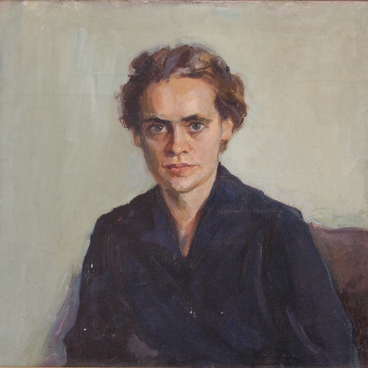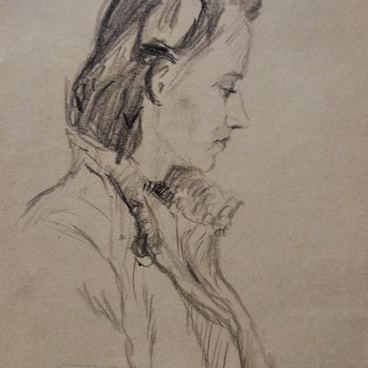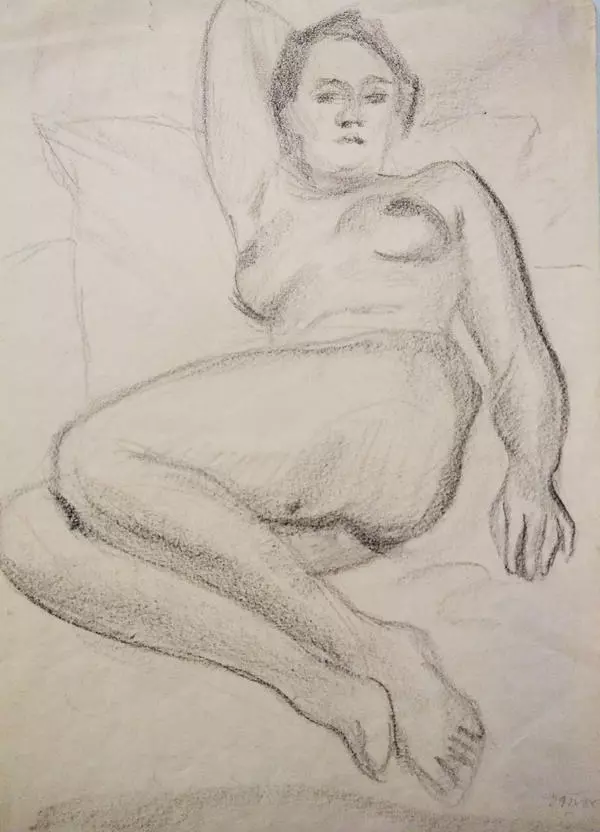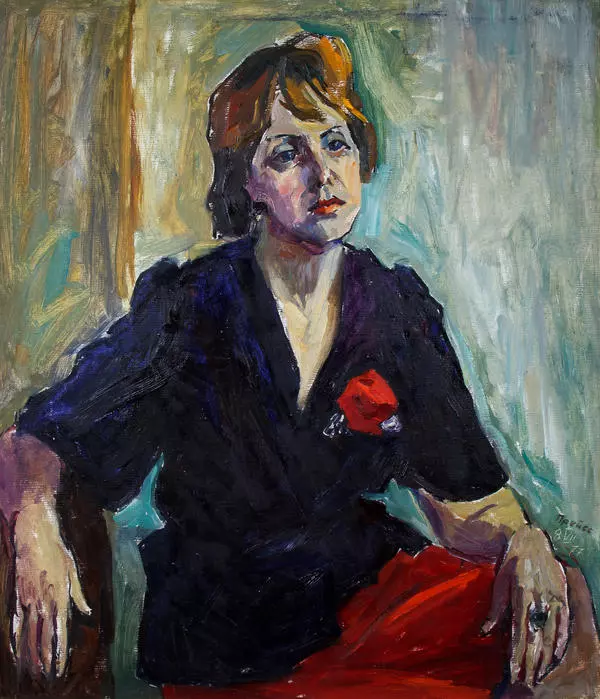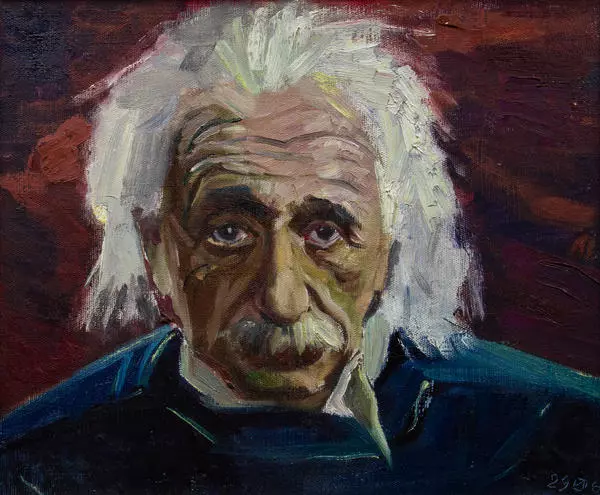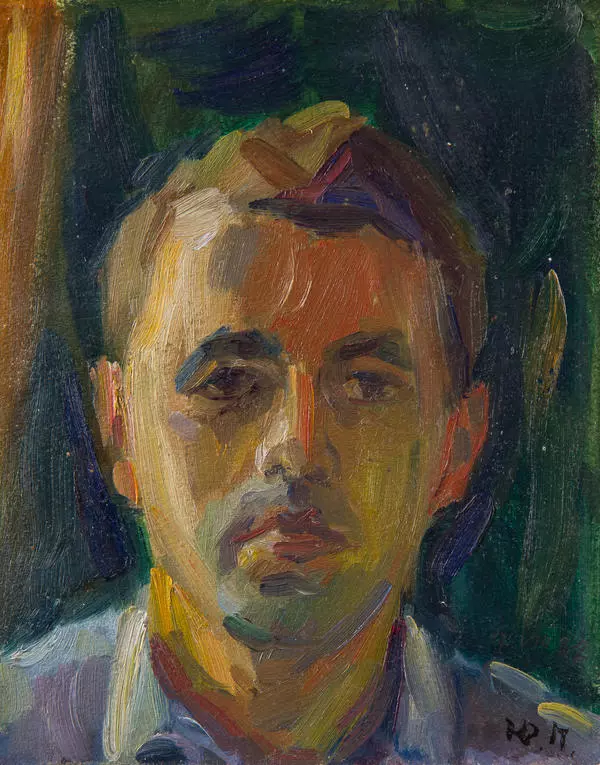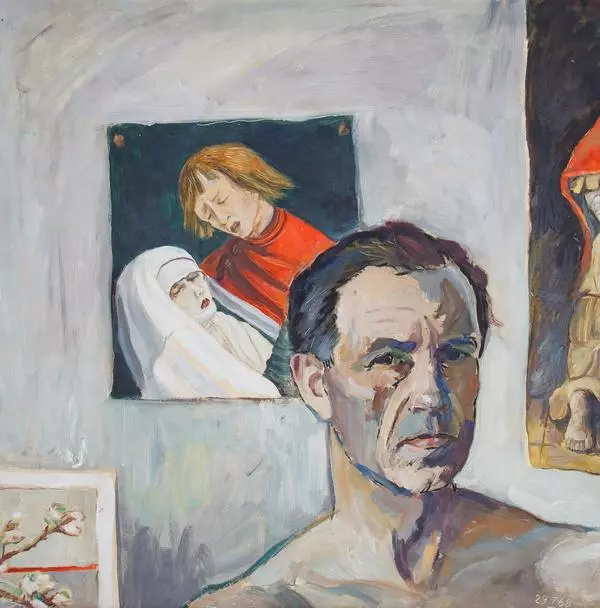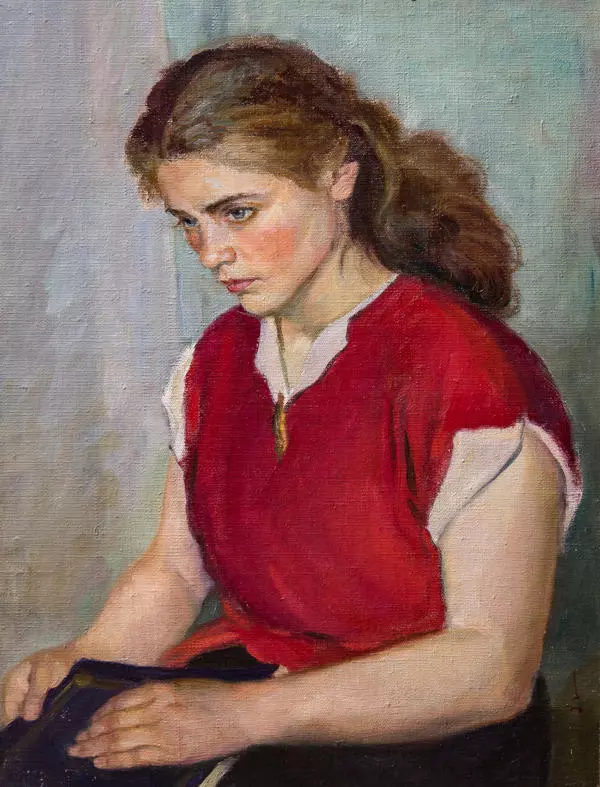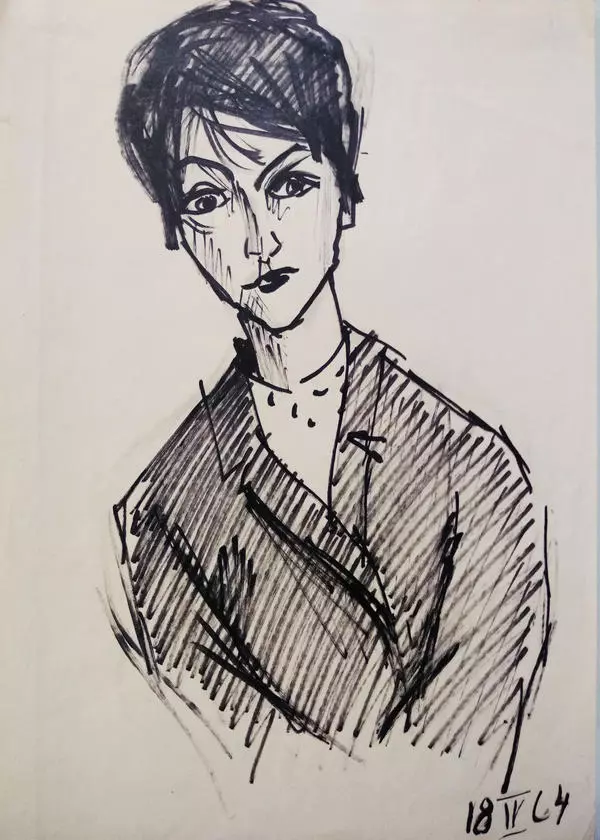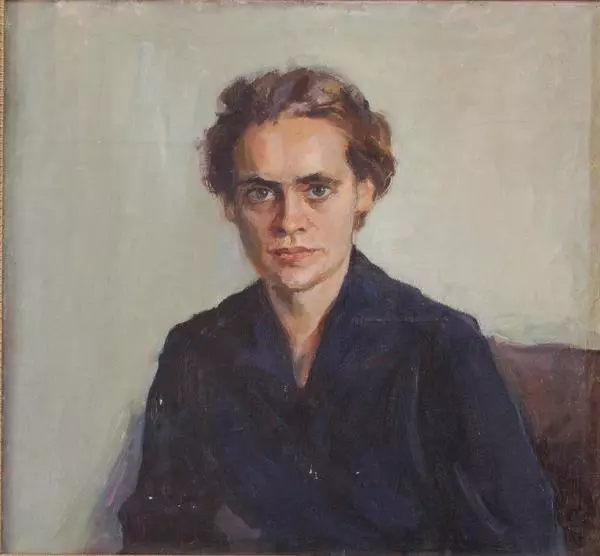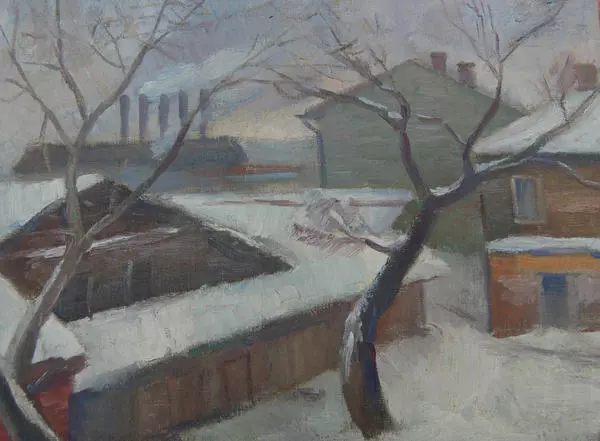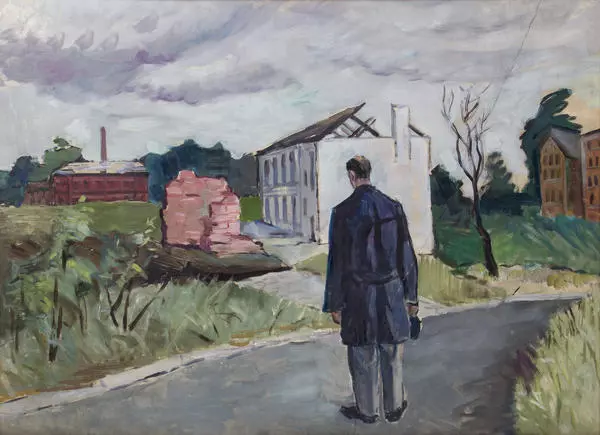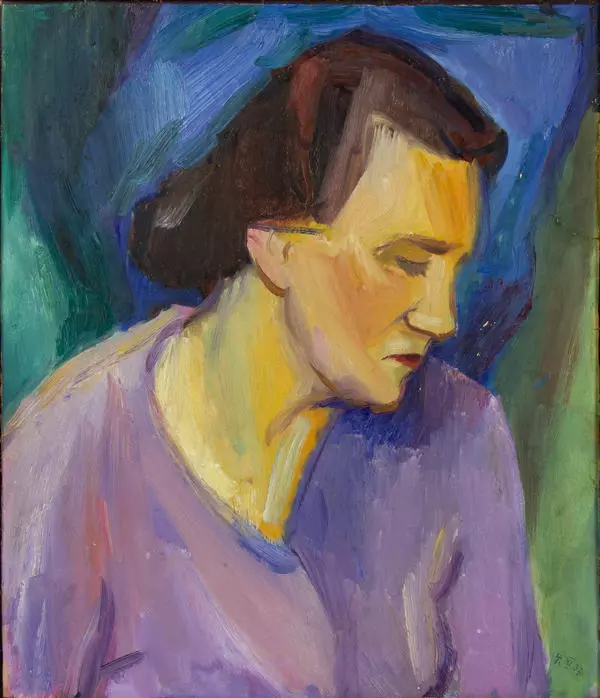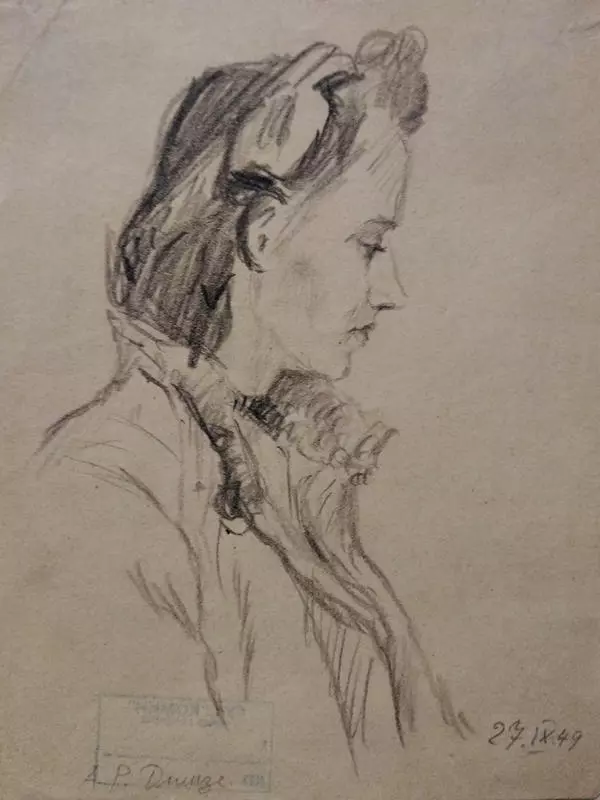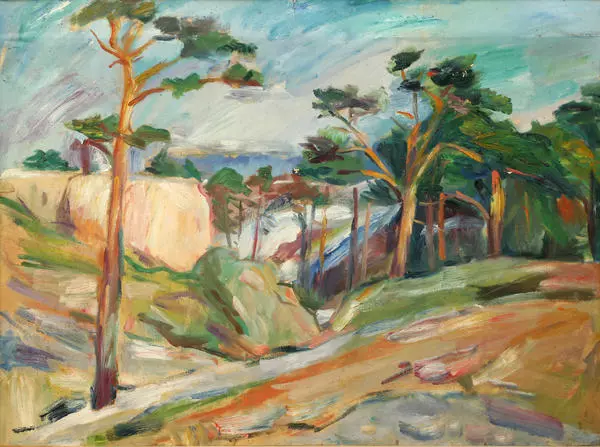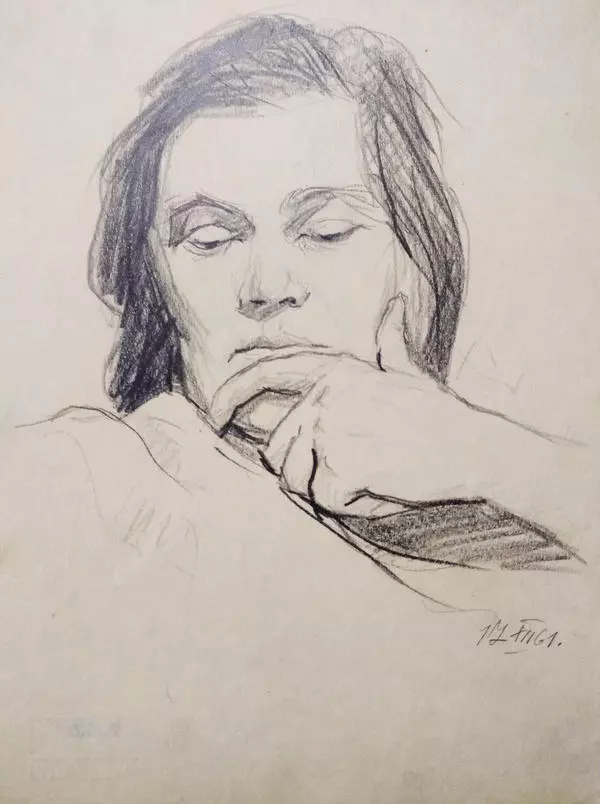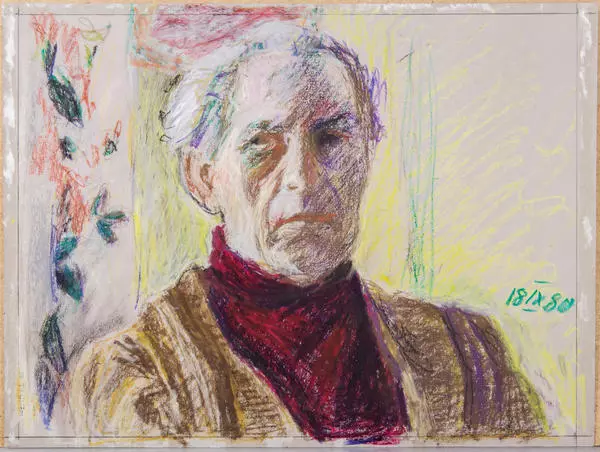Self-portrait in a winter cap belongs to the Tomsk period of Jurgis Preiss' work, i.e. 1940-1950. At that time the artist together with his first wife, Gertrude Gennis, was exiled to Siberia. Shortly before that the couple had moved to the USSR from Europe. They couldn’t go back.
During the Tomsk period the artist painted many self-portraits. They are distinguished by Preiss' close attention to himself and joyless atmosphere. This also influenced the choice of the color scheme: unlike the early works, which were dominated by bright and cheerful shades, the Tomsk pictures are painted with dark and muted colors. The enclosed nature of the image was emphasized by the clothes in which Preiss portrayed himself in the self-portraits. The Self-portrait in a winter cap, painted in 1949, stands out in that series. The clothes worn by the artist in the painting became a metaphor for the armor of the soul: the cap put on low on the forehead, a tight-fitting neck scarf, a buttoned coat with the turndown collar - all that is nondescript, dark, in the spirit of the post-war time.
The surrounding space completes the image of the master. It is tight and obscure: an enclosed background and cold light, sharply revealing every wrinkle of the face, every fold of the clothes. Tomsk artistic circle did not accept Preiss, he did not get along with anyone and yearned for Europe. The artist transferred his gloomy mood on the canvases. Self-portraits, which reflected different moments of life, made up for the artist’s lack of communication after the death of his wife.
In her book ‘The Fate of the Artist’ Zoya Yestamonova quoted the memories of Jurgis Preiss himself about that time: ‘The thing that happened was what we had never expected: the whole republic of Germans of the Volga region was sent to Siberia. And we, who did not quite belong to it, were sent too. We couldn’t understand that. I still cannot understand why we all, experienced, proven communists could not be used otherwise. It left us with a great bitterness that never left us’. That bitterness was reflected in Preiss' self-portraits.
The Self-portrait in a winter cap belongs to the series of paintings that the artist painted in the genre of intimism. This genre, which appeared in the late 19th and early 20th centuries, is characterized by images in the home environment, unusual angles, emphasized two-dimensional technique of the drawing and close attention to colors and composition. The portrait was included in the collection of the Kemerovo Regional Museum of Fine Arts in 2008. It was handed over by Preiss' adopted daughter Lyudmila Biryukova.
During the Tomsk period the artist painted many self-portraits. They are distinguished by Preiss' close attention to himself and joyless atmosphere. This also influenced the choice of the color scheme: unlike the early works, which were dominated by bright and cheerful shades, the Tomsk pictures are painted with dark and muted colors. The enclosed nature of the image was emphasized by the clothes in which Preiss portrayed himself in the self-portraits. The Self-portrait in a winter cap, painted in 1949, stands out in that series. The clothes worn by the artist in the painting became a metaphor for the armor of the soul: the cap put on low on the forehead, a tight-fitting neck scarf, a buttoned coat with the turndown collar - all that is nondescript, dark, in the spirit of the post-war time.
The surrounding space completes the image of the master. It is tight and obscure: an enclosed background and cold light, sharply revealing every wrinkle of the face, every fold of the clothes. Tomsk artistic circle did not accept Preiss, he did not get along with anyone and yearned for Europe. The artist transferred his gloomy mood on the canvases. Self-portraits, which reflected different moments of life, made up for the artist’s lack of communication after the death of his wife.
In her book ‘The Fate of the Artist’ Zoya Yestamonova quoted the memories of Jurgis Preiss himself about that time: ‘The thing that happened was what we had never expected: the whole republic of Germans of the Volga region was sent to Siberia. And we, who did not quite belong to it, were sent too. We couldn’t understand that. I still cannot understand why we all, experienced, proven communists could not be used otherwise. It left us with a great bitterness that never left us’. That bitterness was reflected in Preiss' self-portraits.
The Self-portrait in a winter cap belongs to the series of paintings that the artist painted in the genre of intimism. This genre, which appeared in the late 19th and early 20th centuries, is characterized by images in the home environment, unusual angles, emphasized two-dimensional technique of the drawing and close attention to colors and composition. The portrait was included in the collection of the Kemerovo Regional Museum of Fine Arts in 2008. It was handed over by Preiss' adopted daughter Lyudmila Biryukova.
